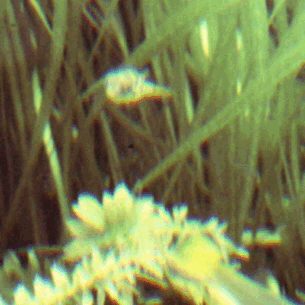#Carinotetraodon travancoricus
Text
🐠 - Fishuary!!
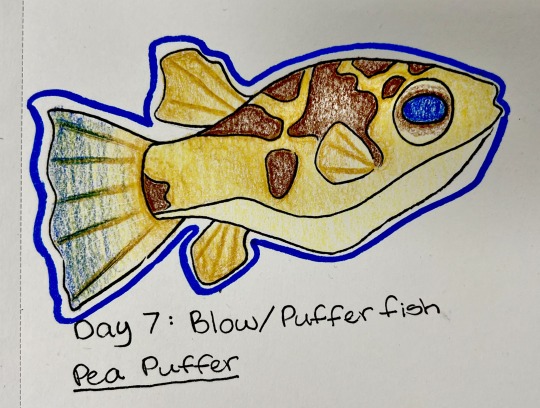
day 7 - blowfish / pufferfish
pea puffer / carinotetraodon travancoricus
@fish-daily
@fishyfishyfishtimes
#fishuary 2024#fishuary#fishblr#drawing challenge#drawing challenge 2024#colored pencil#colored pencil art#art#drawing#artists of tumblr#traditional art#traditional artist#traditional drawing#small artist#fish art#fish#fish drawing#pufferfish#puffer fish#blowfish#blow fish#pea puffer#dwarf pufferfish#dwarf puffer
52 notes
·
View notes
Text
🐟 Fishuary 2024 Day Seven: Blowfish/Pufferfish 🐟

This fish was rather easy to pick (and easy to draw), the dwarf pufferfish, also known as a pea puffer (Carinotetraodon travancoricus)! They're efficient predators, but it also sometimes looks like they have elevator music playing in their head... @fish-daily
28 notes
·
View notes
Text
Uncharismatic Fact of the Day
This dwarf pufferfish, or pea pufferfish has more than spines-- it has teeth! Not only that, but their teeth grow continuously much like sharks. To grind them down, they regularly feed on hard-shelled prey like snails and small crustaceans.

(Image: A wee pea pufferfish (Carinotetraodon travancoricus) by Dan Olsen)
If you like what I do, consider buying me a ko-fi!
#pea pufferfish#Tetraodontiformes#Tetraodontidae#pufferfish#Ray-Finned Fish#bony fish#fish#uncharismatic facts
66 notes
·
View notes
Text
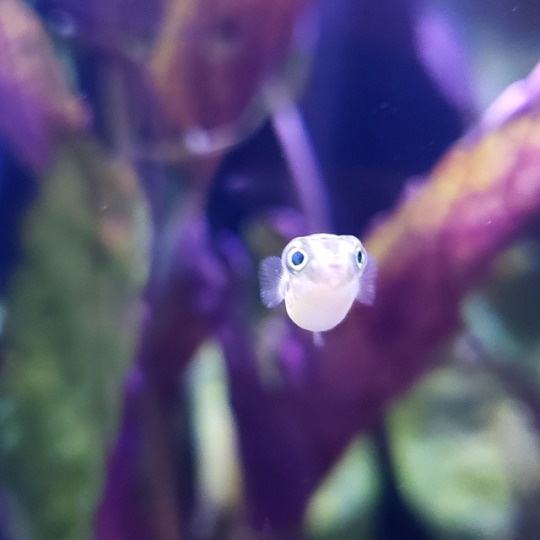
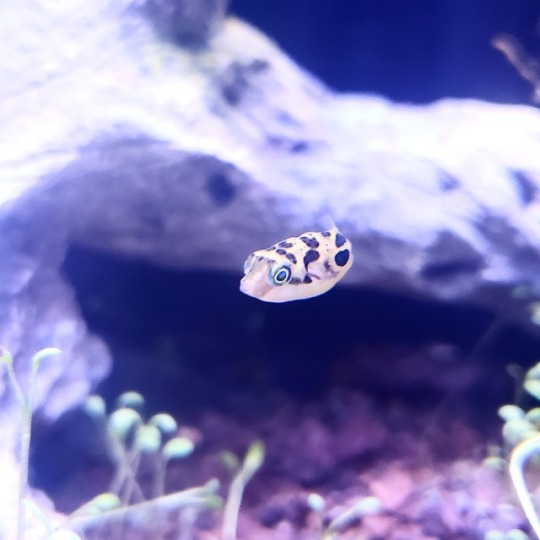
Meet pumpkin seed the newest addition to the family. Hes a pea pufferfish or binomialy known as carinotetraodon travancoricus. He is one of the worlds smallest pufferfish and is entirely fresh water. He's the cutest lil fishy I've ever seen
#pufferfish pumpkin seed#pufferfish#pumpkin seed#fishblr#fishy#Carinotetraodon travancoricus#cute#planted tank
2K notes
·
View notes
Note
6. Såååøh kan man få flere fiskebilleder?
OM MAN MÅ
det viser sig dog at det er medium til meget svært at tage ordentlige billeder af de her små basser, så nyd: en Bad Boi gemt i det grønne:

En smuk, sjældent fotogen mand, der giver sine bedste vinkler

Og en goblin!

Bonus Otocinclus!

6 notes
·
View notes
Photo

3/366 3/366 - taken 11.01.2020 - Sony A77 Dwarf Pufferfish - Carinotetraodon travancoricus
0 notes
Video
Dwarf puffers arrived!
#fishblr#dwarf puffer#puffer#pufferfish#puffer fish#fish#video#Carinotetraodon travancoricus#pea puffer#pygmy puffer
77 notes
·
View notes
Text
OFOTD #248
The world's smallest pufferfish is the Malabar puffer (Carinotetraodon travancoricus), also known variously as the dwarf or pygmy puffer among several other names.
#ocean#ocean facts#scienceblr#science facts#science#marine biology#marine bio#biology#fun facts#animal facts#trivia
62 notes
·
View notes
Note
do you have any good care sheets for dwarf freshwater puffers?
Yes! By the great Aquariadise
https://www.aquariadise.com/spotlight-dwarf-puffer/
6 notes
·
View notes
Note
What kind species of Puffer are you thinking of getting? My local specialty store (a private owned aquarium/aquatic store) has always told me that all freshwater puffers still need at least 55 gallons.
I'm getting a dwarf puffer fish(Carinotetraodon travancoricus)! They're also known as a pea puffer or a pygmy puffer. The biggest they get is 1.4 inches(3.5cm) which makes them suitable to be in a 5/10 gallon! Maybe your pet store doesn't get them in which is why they told you that?
5 notes
·
View notes
Video
youtube
Feeding captive dwarf pufferfish [Carinotetraodon travancoricus] blackworms using a feeder built from a pipette.
41 notes
·
View notes
Photo
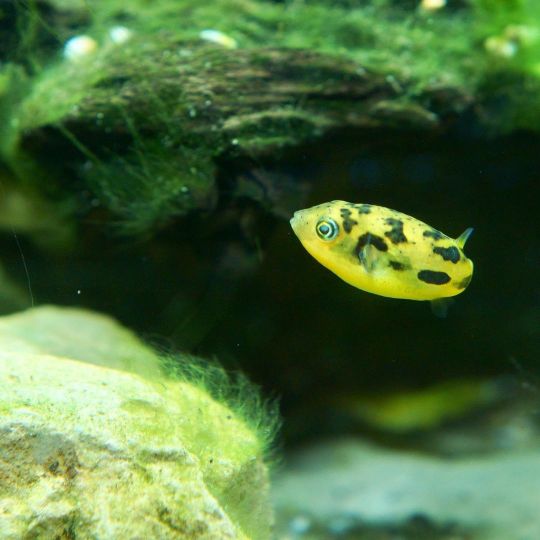
The ever inquisitive pea puffer (Carinotetraodon travancoricus). Love my little friends in their planted aquarium! It is a joy to watch all six of them swimming together and feasting on ram snails. . . #aquarium #fishtank #natureaquarium #plantedaquarium #peapuffer #freshwateraquarium (at Minneapolis, Minnesota) https://www.instagram.com/p/CbaC43fOge_/?utm_medium=tumblr
0 notes
Text
About Cichlid of India
India is home to over 700 freshwater fish. These include catfish, loaches barbs Channas (Snake head) gobies, etc. The majority of species are native to just two areas namely that of the Western Ghats and the North East. Each year new species are identified and identified. Of all freshwater fish Indian barbs Channa as well as Cichlid fish are well-known worldwide and many hobbyists would prefer keeping the fish in their aquarium. There are over 1500 species of Cichlid that can be found around the world, however, there are just three species indigenous to India. They all share an incredibly similarity in appearance to Madagascan Paretropline Cichlids. * Etroplus suratensis Pseudetroplus maculatus Etroplus canarensis * Tank Size to hold this species of fish is an aquarium that has dimensions of base 48x25 inches. For Etroplus suratensis it is 60x24 inches.

In nature, fish are believed to breed in the months of December and January in the winter months, when temperatures are lower and the high monsoon water has been drained the simulation of the transition between seasons can trigger fish in captivity to spawn.
Etroplus Suratensis (Green Chromide) is found in fresh and brackish water bodies. They grow up to around 12 inches in length. They are aquacultured as a popular fish for food throughout the Indian state of Kerala. In addition to the size of these fish, they make ideal for your home aquarium. In the spawning period, they lay eggs placed on an underwater log, rock or sometimes weeds and roots in slow or still flow of water. Parents protect and move the eggs until they hatch which typically takes four days. The fry will shoal around their parents for the initial couple of weeks of development. The parents aren't allowed to feed them until the time they spawn until the fry have become independent.
Etroplus maculatus (Orange Chromide) are found both in freshwater and brackish bodies. In a variety of locations, they are located alongside suratensis. They can grow up to 4 inches in height. Males of this species display an intense orange coloring when they're breeding. There is a selectively-bred species of aquarium called the Tangerine Chromide. It spawns in shallow water, in the surface of a soft depression, which is excavated from both parents. Around 200 eggs hatch which develop after 5 days. During this time, parents tend the eggs, and, if required, blow the eggs. One parent is always in the egg while other parents go out and about. They are protected by their parents until they are close to sexual maturity.
Pseudetroplus maculatus (Orange Chromide)pair with fry in the Western Ghats stream. Etroplus canarensis (Striped Chromide) is only found in those of the Netravathi as well as the Kumaradhara River. They can only be found in Freshwater. They can grow up to 4 inches in length. The substrate is composed mainly of small stones and leaf litter with a few tree roots extending towards the sea along one side as well as other fish species like Puntius Mahecola, Pristolepis Marginata, Garra Mullya, Devario Malabaricus, Carinotetraodon Travancoricus, Rasbora Daniconius along with Barilius Gatensis.
Click to know more about fish species, visit our website Creature Companion.
0 notes
Note
6. Giv mig kuglerne
Herfra
6. Må man se et billede af dine fisk?
DET MÅ MAN

MAN MÅ ALTID GERNE
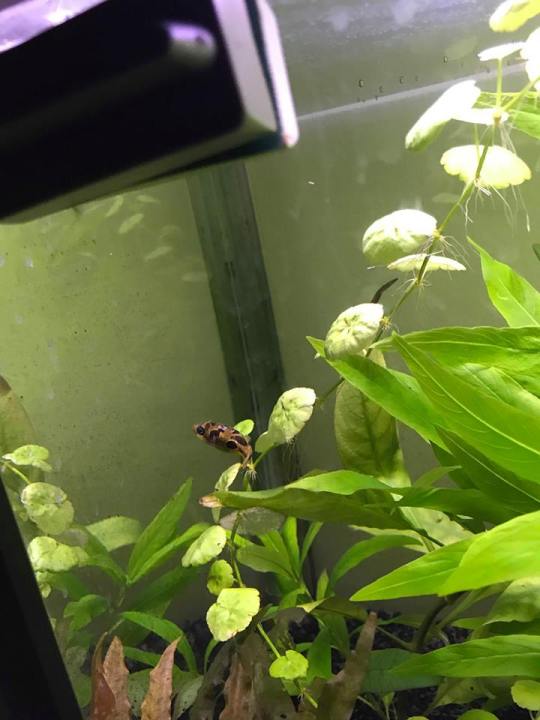
SE

FISKEMÆNDENDE
6 notes
·
View notes
Text
The Mighty Pea Puffer

Small and intelligent, pea puffers have been gaining popularity within the hobby in recent years due to their charming personalities and relatively undemanding requirements. If you have a betta-sized tank but you’re not really looking to pick up a betta, a pea puffer might be the fish for you.
Care level: Intermediate, you need to feed them a specific diet of live food only.
Scientific name: Carinotetraodon travancoricus
Common name: Pea puffer, dwarf puffer, dwarf pea puffer
Habitat: Slow moving and still waters in south west India. This is a strictly freshwater puffer!
pH: 7.0-7.8, they do well in moderately hard, neutral and alkaline waters as opposed to softer, acidic waters, so if you have harder, more alkaline water then this fish might be great for you.
Temperature: 72-80 degrees F/22-26 degrees C
Tank size: 5 gallons would be the absolute minimum for one, some sources disagree and say 2.5 or 3 gallons, but I don’t ever house anything in a tank smaller than a 5 because it’s easier to keep stable water chemistry, which the puffers need. The 10 gallon my single puffer, D.va, is in is ideal.
Maximum size: Tiny! 1″
Setup: A dimly lit, heavily planted tank that provides a lot of surface cover with either plants that grow long, draping leaves such as sag or vals, or using floaters such as frog bit, salvinia or dwarf water lettuce. You can also put in driftwood to add to the decor to fill up the extra space, the more claustrophobic the setup, the better. Since they appreciate still or slow waters, you’ll want to baffle your filter. If you plan to attempt to keep more than one, the most common rule is at least 5 gallons for the first fish, and then 3 for each extra fish, with plenty of added cover to break up the line of sight, similar to a betta sorority. It has not been in my experience that cohabbing these puffers works well, but for others they’ve had a success. It entirely depends on what you are comfortable with and what kind of personality your puffers have. These are solitary fish for the most part and do poorly in communities, so it is not suggested to keep them as anything other than a species only tank. Like a betta, you can try adding in shrimp, be it fancies or ghosts, but keep in mind that, also like a betta, they may choose to snack on their tank mates. For example, D.va killed and mutilated two ghost shrimp the moment they went into the tank, then ignored the other two. I’ve put neo culls into her tank and she leaves them alone, but she eats all of the shrimplets whenever they drop. Pea puffers are highly intelligent fish who will grow to recognize your face and beg for food each time they see you, so keep that in mind when it comes to decor. You can add in and take away rocks, driftwood, safe decor, sinking botanicals, or rearrange the plants in the tank to provide them some stimulus.
Feeding: This is where you’ll encounter the most trouble. Puffers are fussy feeders, refusing to accept any pellet food or even gel food (in my experience) and only opting for fresh, live food. They can also be incredibly shy for the first few weeks that they are in their new homes and you might not see them come up to you at all, so you’ll need to give them food in one designated spot at first that they will find and snatch up, or you will have to daily provide two or four snails to make certain they are eating. You’ll want to have a stable supply of pest snails, such as bladder snails, pond snails or ramshorn snails, you can set up a small filtered tank to accomplish this. There seems to be some confusion about whether or not pea puffers need the snail shells to keep their teeth down, but pea puffer teeth becoming overgrown is rare and almost unheard of, and they don’t even bite the shells of the snails, they just grab the foot of the snail and violently tear them free from their shells. Just plop them into the tank and your puffer will find them, and soon the bottom of your tank will be a snail shell graveyard. Puffers also absolutely love black worms and white worms, so it’s important that you have a supply of those on hand. Black worms can be bought at your LFS if you don’t want to care for your own culture, or you can get a culture of white worms which are far less disgusting in my opinion, as they are harmless, simple round worms that you can house in organic, perlite-free soil, mushroom compost or coconut fiber. They’re easy to care for and you can look up their care here. Some people have been able to get their puffers to eat frozen foods, but so far D.va simply turns her nose up at them, offended that I offered her something dead and limp instead of alive and squirmy. If you can stomach it, puffers will also gladly accept small red wigglers that have been cut up into half inch pieces.
Where can I buy it?: Most LFS sell them nowadays, and they can be purchased online as well. I have not yet seen them in chain stores, and hopefully never will, most likely because of their demanding levels of feeding.
Can they be bred in captivity?: Yes, but it’s uncommon, you would need to get a large harem of females to one male to make it work. They are sexually dimorphic, the females tend to be rounder than the males once mature, and the males display small, iridescent striping behind their eyes and also show a dark line running down their underside.
#fishblr#megs does guides#aquablr#pea puffer#yes i did that little puffer doodle#i'm gunna update all my care sheets with little pixel doodles like that
481 notes
·
View notes
